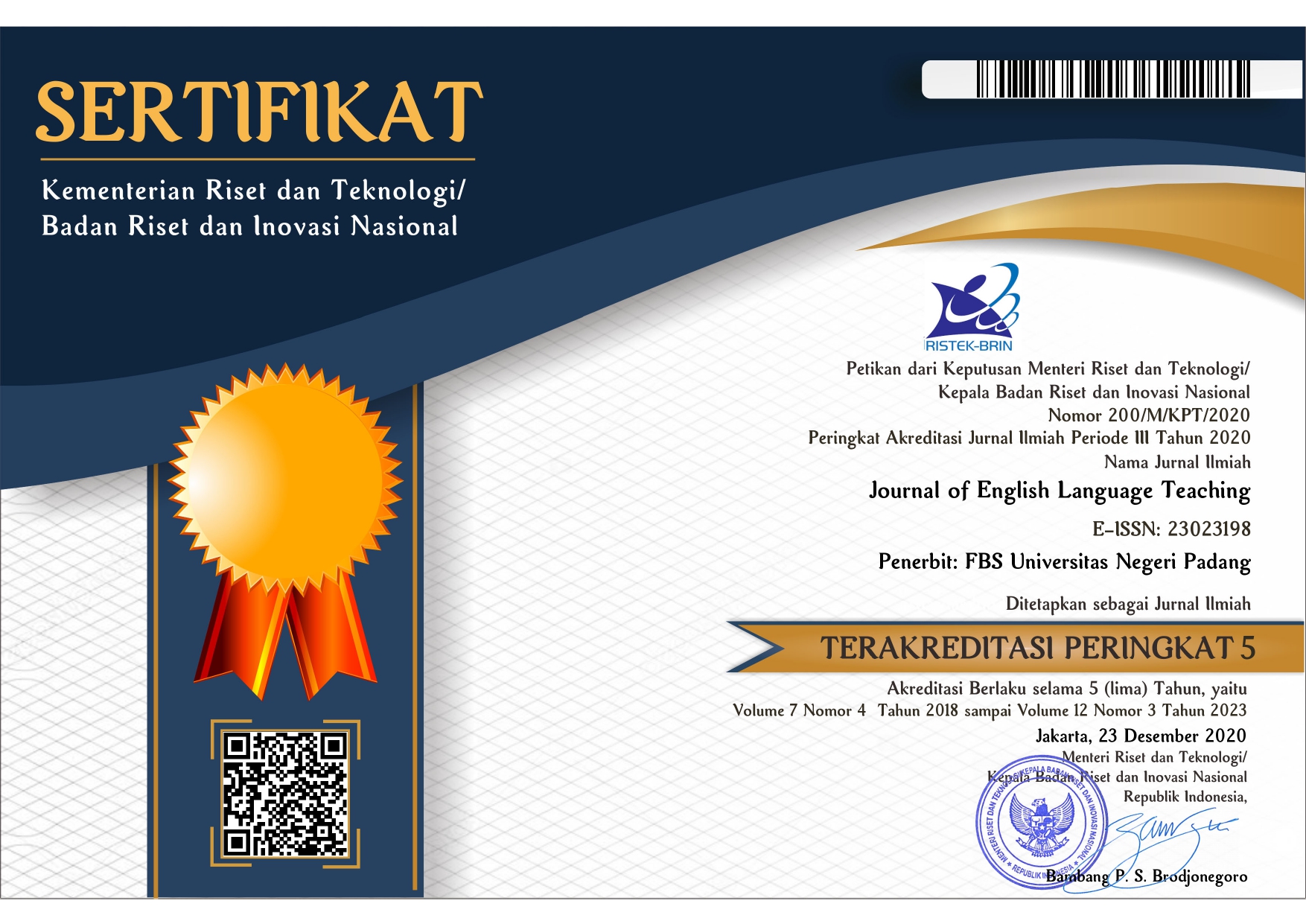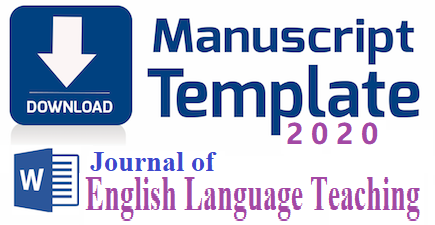The Students’ Techniques In Translating Swear Words In The Novel Fight Club (1996) by Chuck Palahniuk
 ), Havid Ardi(2),
), Havid Ardi(2), (1) Universitas Negeri Padang
(2) Universitas Negeri Padang
 Corresponding Author
Corresponding Author
Copyright (c) 2022 Raesa Savelia, Havid Ardi
DOI : https://doi.org/10.24036/jelt.v11i4.119999
Full Text:
 Language : en
Language : en
Abstract
The purpose of this research is to find out the translation techniques used by English department students in translate swear words in the Fight Club novel. This is descriptive qualitative research. Students from the translation class were chosen for this study using a cluster random sampling technique. Techniques for collecting data include translation tests. Translation technique was classified based on Molina and Albir theory. The result of this research indicate that students’ techniques in translating swear words in novel were literal translation, adaptation, discursive creation, reduction, borrowing, established equivalent, explicitation, description, modulation, and substitution. This finding is aplies that swear words is best translated in established equivalent technique.
Keywords
References
Addinna, A., Ovilia, R., & Asfina, R. (2019). The effect of visualization strategy in reading observed from students’ cognitive learning styles. Lingua Didaktika: Jurnal Bahasa Dan Pembelajaran Bahasa, 13(1), 26–34. Retrieved from https://doi.org/10.24036/ld.v1
Andini, D. W., & Amilia, I. K. (2022). An Analysis of Swearing Word Types and Translation Techniques in Shaft Movie Subtitles. Jurnal Bahasa Asing Lia, 3(1), 40-54.
Ardi, H., Muhd. Al Hafizh, & Arianto, M. A. (Eds.). (2020). Kurnia dalam Bahasa: Pengkajian Bahasa, Sastra, Budaya & Pengajarannya. Yogyakarta: Erhaka Utama.
Aresta, R. (2018). The influence of translation techniques on the accuracy and acceptability of translated utterances that flout the maxim of quality. Humaniora, 30(2), 176-191.
Azoua, M. H. (2020). Language clubs and pedagogical approach to teach English: University of Parakou English club case. Lingua Didaktika: Jurnal Bahasa Dan Pembelajaran Bahasa, 14(1), 44–54. Retrieved from https://doi.org/10.24036/ld.v14i1.107995
Becerra, T., Herazo, J., Garcia, P., Sagre, A., & Diaz, L. (2020). Using reading to learn for EFL students’ reading of explanations. ELT Journal, 74(3), 237–246. Retrieved from https://doi.org/10.1093/elt/ccz053
Handayani, T., Rozimela, Y., & Fatimah, S. (2020). An analysis of English-speaking anxiety experienced by the second year students of English Language and Literarture Department of Universitas Negeri Padang and its causal factors. Journal of English Language Teaching, 9(3), 580–592.
Hapsari, B. S., & Ena, O. T. (2019). English Pre-service Teachers’ Identity during Teaching Practice: Narrative Research. International Journal of Indonesian Education and Teaching, 3(2), 204–214.
Kusumaningputri, R., & Widodo, H. P. (2018). Promoting Indonesian university students’ critical intercultural awareness in tertiary EAL classrooms: The use of digital photograph-mediated intercultural tasks. System, 72, 49–61. Retrieved 1 February 2018 from https://doi.org/10.1016/J.SYSTEM.2017.10.003
Mahmudah, R., & Ardi, H. (2020). The use of instagram platform toward junior high school students’ speaking ability. In Advances in Social Science, Education and Humanities Research (Vol. 411, pp. 364–369). Paris: Atlantis Press. Retrieved from https://doi.org/10.2991/assehr.k.200306.061
Putri, N. E., & Sari, S. Y. (2020). Applying vlog assignment to develop students’ speaking ability. In Advances in Social Science, Education and Humanities Research (Vol. 411, pp. 280–283). Retrieved from https://doi.org/10.2991/assehr.k.200306.046
Ristimäki, H. L., Tiitinen, S., Juvonen-Posti, P., & Ruusuvuori, J. (2020). Collaborative decision-making in return-to-work negotiations. Journal of Pragmatics, 170, 189–205. Retrieved from https://doi.org/10.1016/j.pragma.2020.08.012
Rochmania, N. (2011). Analysis of translation technique To the translation quality of swearing word in “The Adventures Of Tintin: Prisoners Of The Sun” comic.
Sugiyono. (2017). Metode Penelitian Pendidikan Pendekatan Kuantitatif, Kualitatif,dan R & D. Bandung: Alfabeta.
Triastuti, A. (2020). Assessing English pre-service teachers’ knowledge base of teaching: Linking knowledge and self-portrayal. TEFLIN Journal, 31(1), 108–138.
 Article Metrics
Article Metrics
 Abstract Views : 166 times
Abstract Views : 166 times
 PDF Downloaded : 64 times
PDF Downloaded : 64 times
Refbacks
- There are currently no refbacks.
Copyright (c) 2022 Raesa Savelia, Havid Ardi

This work is licensed under a Creative Commons Attribution-NonCommercial 4.0 International License.
















